Disclaimer: The views expressed in this interview are solely those of the interviewee.
This interview with Alison Miller forms part of ISSTD News’ Focus on History Series. In this series we interview people who have played an important and influential role in the formation and development of ISSTD, or the wider complex trauma and dissociative disorders field. We are delighted in this latest installment of Focus on History to interview Alison Miller, who has been working as a counsellor and psychologist since the 1960’s and is one of ISSTD’s retired members. She has been involved in the development of the Ritual Abuse and Mind Control Special Interest Group, which has grown and evolved over the years to become our Organized and Extreme Abuse SIG. She is also a past Chair and current Secretary of the SIG. She is well known to many for her conference presentations, workshops, journal articles and her books.
KATE: Welcome, Alison. It is a delight to be able to do this interview with you. Would you perhaps start off by telling us a bit about your background, how you got into mental health, and what led you to become a registered clinical psychologist?
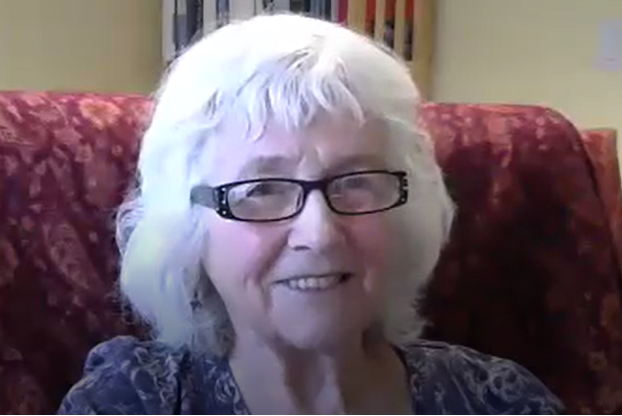
ALISON: As a child, I wanted to be a writer. But I studied psychology because my university had no creative writing program. I was appalled by the classification of mental disorders, and by the display at the mental hospital where I interned, of people in each category, one of whom turned out to be my high school French teacher, a lovely woman. At every stage (BA, MA, PhD) I wrote a paper suggesting it made no sense to put human beings into such boxes. On the other hand, I liked counselling people, doing it on a volunteer basis as a student. It came to me naturally and I did it because I enjoyed it.
When I graduated with a BA from the University of British Columbia (UBC) in 1961 at the age of 19, my mother nagged me to go to graduate school somewhere. A scholarship was available which paid my way to India and all my expenses for two years, and of course I wanted the experience of another culture. The Masters in Psychology had a course in ‘Indian Psychology’ which was really a course in Buddhism, but the rest of the course was ancient Western psychology. I learned far more from the cross-cultural experience. After the MA, I worked in counselling for a nonprofit group, first in India and then in Canada.
It was 1968 when I went back to graduate school at UBC, so I could learn more about what I was doing. There was this whole subset of people that I felt I couldn’t help. I didn’t understand why they behaved as they did, why they seemed to over-react to things. Of course, I now know that these were the victims of childhood trauma, but back then I didn’t know that.
KATE: So, you have a long history in the field, dating from the 60’s. You must have seen some incredible changes, just in the field of psychology itself, let alone the complex trauma field.
ALISON: Yes, absolutely. When I was in graduate school, it was all behaviourism. I remember we got taught in training that video footage of the battle of therapy with Albert Ellis, Skinner…. Oh I can’t recall… with the same client.
KATE: (Suddenly realising things haven’t changed that much!) Yes, we got taught that too. We got shown the same client with Albert Ellis, I think Fritz Perls and Carl Rogers… I remember that. I thought much of it was horrendous.
ALISON: Yes, indeed.
KATE: Tell me a little bit more about that time. I am wondering, were there many women working in the field in the late 60’s and early 70’s?
ALISON: Oh, yes. There were women. In grad school about half the students were women. At the time the joke was that they picked the female students for their looks… I don’t think it was an entire joke. I am sure there were professors who were sexually involved with some of the female students. It was just the way it was back then.
About half of us were women, and we were mostly Canadian. The men were mostly US draft dodgers as the Vietnam war was going on. The male students had moved up from the US to avoid the draft.
KATE: How did you move into the trauma field, and from that into the dissociative disorders field?
ALISON: I wanted to understand people with complex trauma, but I didn’t get any of that in my studies. There was no teaching about that at all. I got what I could from my psychology training. I actually think social psychology was the most useful…I struggled through a PhD as I was married and having babies at the time. In fact, my PhD and my second baby were born at the same time. I sent out a joint birth announcement! A picture of a baby with a cap and gown…
KATE: That must have been so challenging.
ALISON: Yes, it was very hard.
KATE: So, you didn’t get trauma and dissociation training in your degree, but you did move into the field clinically.
ALISON: Yes, the first job I got was in child and youth mental health. I quickly discovered that I couldn’t help children unless I also worked with the parents. Family Systems Theory was new then and we were all studying it. At that point I started to do parent education. I integrated the family systems stuff into my parent education courses, which provided a kinder alternative than the behaviourism monster that was out there at the time.
I was learning from the clients. I was learning about family systems and learning that the parents’ childhoods had a lot of effect, how you were parented had a big effect. We set up family of origin groups for people who wanted to look at how they were raised and what effect it had on them and then on their kids … I learned it all on the job, and from workshops.
KATE: I imagine that family systems training provided a very solid background for the type of work you ended up doing, working with people who have their own internal systems.
ALISON: Yes, exactly, and in family mental health programs you learn to work with kids, with adults. You learn how to work on the interactions between children and adults. You learn about the irrationality of adults when they are triggered into a child state. The early clients I saw with complex trauma had DID and were victims of organized abuse, so I was just plunged into it.
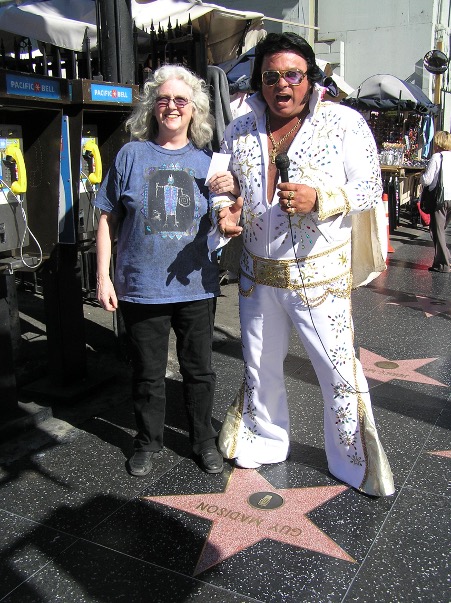
KATE: Can you remember the first time you realised a client had DID? Was it a shock to you? A new thing?
ALISON: Yes. The first client I recognised had DID was a young woman who I met through my parenting course. She’s identified as Teresa in Chapter 1 of my book, Healing the Unimaginable. She was a young woman, with the pejorative label of BPD. When Teresa came to me through my parenting workshop, she had a two year old daughter and she was trying to parent her. Teresa quickly got attached to me, very strongly attached. She became so attached that she would hang around the hallways… I could not go to the bathroom without seeing her. She clearly wanted something from me… I took her on as a client … so I could help the child. If I could help her, I could help the child …. She puzzled me. She seemed very inconsistent, she seemed to over-react to things, even her obsession with me was a puzzle. I wanted to know what was going on. So, I met with her and over time she began to talk about her inner child. And at that time the inner child was in vogue – it was a popular notion and being up here in western Canada we just tend to think that all these notions just come up from California, they spread around the world and then they die out. So, I thought she was just part of the inner child fad.
KATE: (laughing) We sometimes do that over here in Australia as well, ‘Oh, that’s just come over from America’. But in fact, some of these concepts do stick and I can hear for this lady it had a different meaning.
ALISON: Oh yes (laughing). Our mental health centre was attached to a big hospital, and there was this day when Teresa’s inner child stole a wheelchair from the hospital and rode it all around the hospital grounds. When they stopped her and confronted her… she told them she was my employee. That’s when I started to pay genuine attention to her inner child.
KATE: That’s so funny. I hear a lot of ‘first DID client’ stories when doing supervision, and usually they are quite stressful situations that lead the therapist to realise the client has DID, so it’s good to hear a story that has a bit of humour to it. And I can hear in your voice affection for Teresa and her child parts, even though they were up to a bit of no good that day.
ALISON: Her inner child was having a lot of fun. She was not an employee of mine, but I had actually given her a volunteer role cleaning up the play therapy room. I realise now, probably spending hours in there on her own, playing. When I looked back after recognizing Teresa and other clients had DID, I could also identify at least three previous clients who had DID, one of them being very probably involved with an organized abuser group.
KATE: When did you realise you were seeing cases of Organized abuse?
ALISON: Once I know I had a client with DID, I organized a training on dissociative disorders… these people from California came up for it. They talked about DID, but also about organized abuse, which they then called ritual abuse. They talked about organized personality systems, systems being deliberately structured. I thought ‘Oh thank goodness I don’t have anyone like that…’
And then I went back to work and mentioned this to Teresa, saying ‘I don’t have anyone like that’, and she said ‘Oh, don’t be so sure of that’…
Not much later I was on the intake phones for the organization I worked for. This young man, Tony, called in. I remember he said he was a Christian and a survivor of ritual abuse and he’d had a flashback. I asked what his flashback was about. And it was about his stepfather trying to drown him in the sink in the basement and I was thinking… why does he call this ritual abuse? There’s no ritual involved. But of course, that was not his only memory.
Anyway, Tony wanted to come and see me. He had been diagnosed with paranoid schizophrenia and was on strong medications, but he was spewing out all kinds of memories and was clearly DID. Even though seeing single adults was not my mandate, I took him on. It turned out that his parents were regional managers for the local cult… these were my first clients…then I got Jennifer, a teenager, who had DID, and Teresa’s friend Lorraine. These first DID clients were all members of the local Satanic cult.
KATE: I guess some mental health professionals, hearing stories of extreme abuse, may be tempted to think it is all made up or delusional, but you didn’t get a chance to disbelieve, as your situation was a little unique.
ALISON: Yes. I had these four clients, all abused by the same cult. They unknowingly corroborated each other – they had information about events and abuse… and it was still going on, these were current events … I was followed by these abusers…. I had all kinds of corroboration and evidence. I tried to work with the police, but it didn’t work out the way it should have.
KATE: As it often doesn’t! So, by this time had ISSTD been formed?
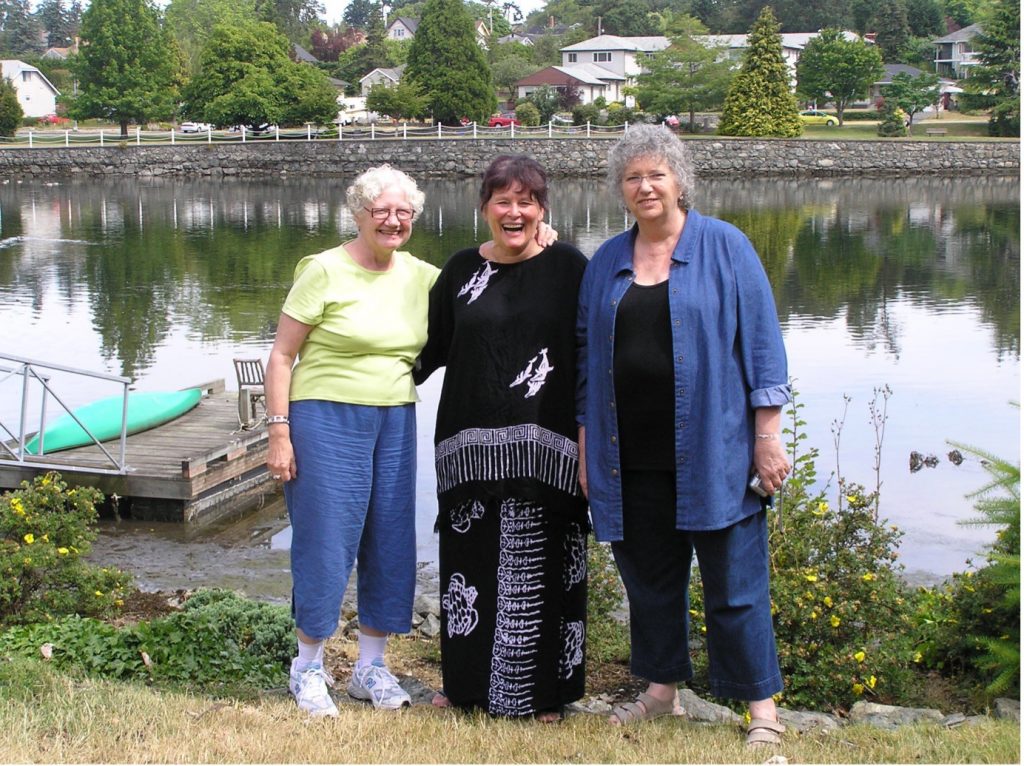
ALISON: I don’t remember how I found out about ISSTD. The first conference I attended was in Vancouver… At that point ISSTD was talking about ritual abuse. There were professional presentations on the topic.
KATE: What was that like? What did it feel like to be at a conference where other people were treating the same issues you had encountered in therapy?
ALISON: It was really exciting … I figured finally there are other people dealing with this. I can learn from them. People talked in the corridors… One therapist, Eroca Shaler, became my friend and we attended many conferences together. Eroca’s client Stella Katz was also at that conference, and she clearly knew a lot about ritual abuse, more than Eroca or I did. She later wrote a chapter for Healing the Unimaginable. (Editor’s Note: Alison is using pseudonyms for all survivors.)
KATE: And then something happened for the field. Not so long after that the FMS started and people began talking about ritual abuse, even DID itself, was something that crazy therapists made up.
ALISON: Yes, it was very strange. Two years later everything changed. There were no presentations on organized abuse. Bennet Braun had been sued and Judith Peterson, who I had done training with, had criminal charges brought against her. Everyone was frightened about this. What we were being taught at ISSTD now was don’t talk about these things and don’t ever suggest anything to your client. Well, I already knew that you never do suggestive therapy! I had already been taught that. That was just basic! But this went beyond that. It was about shutting it down, and ‘you don’t know if you can believe a client and you need to make it clear to them that you are not taking sides’. It just felt like everything was being discredited and you couldn’t talk about it. But my clients were making really good progress, even those still being harassed, they were still making great progress. And what I was hearing at ISSTD was you know … back track, be careful, cover your arse. That’s what it was all about, but they didn’t use those words.
Yet when someone has been through an horrendous experience they need to know that you care. They need you to care about what they have experienced, even if their memories are not 100% accurate, because memories are never 100% accurate. They don’t need you to sit behind your desk and act like these memories don’t matter and they’ve made it all up.
KATE: We have launched ourselves straight into the present as that debate around trauma and memory is one which is still alive today. I note that JTD is having a special edition on the issue of false memories. We still write on it and talk about it. Frontiers had a series of articles which you contributed to, where we talked about this issue. And it’s a very, very complex issue as we talk about to what extent we remain therapeutically neutral. I guess the core of the issue is that people feel differently about what therapeutic neutrality means and about believing or disbelieving memories. It is still a hot debate today.
ALISON: Yes, it is, and I did contribute it to it most recently. I think the debate reduced for a while when the FMS people managed to shut us down, but it has re-awakened. It’s all still there. Essentially, it is the survivor who needs to figure out what is real and not real in their memories. It is not my job. It was my job to listen to the client, to be compassionate, and to help them open up and talk about what’s important for them to talk about. And that is all. I think as long as I remember the limits to my job, then that’s okay. It was not my job to sit there and say ‘this is all true’ and then suggest more. But (equally) it was not my job to sit back and say, ‘I neither believe you or disbelieve you… and I think your attachment to your father is more important than what you are saying your father did.’ Or some such thing.
KATE: So, you are talking about being a compassionate psychologist, but a very non-directive one, letting the system work it out. And I can also hear your belief that if you do say to the client something like, ‘I think this is more important’, in relation to memories, then you run the risk of not being neutral in a different way, and inadvertently leading the client. You are telling them what’s important to them, rather than letting them work it out?
ALISON: Yes. I think if we tell the client what is or is not important, we are leading the client. It is really important to just be with the client. And the other thing therapists need to do, is to be curious. Curiosity is REALLY important. I was always really curious about what made my clients tick… Helping the client become curious about themselves so they can put things together in the way they need to.
I learned early in my work that perpetrator groups are deceptive. They deliberately deceive victims about what’s going on, so helping the client to become curious themselves, helping them become curious about their own inner personality system, what other parts of the system know, think and remember, and have inner dialogues so they can work things out and put things together themselves. Compassion and curiosity go together.
KATE: Yes, indeed. One of the other things I did want to talk to about is your books. I think pretty much all of us working in organized abuse have them on our bookshelves. There are so few books written in the field and you have been a pioneer, writing to my knowledge, some of the very few books in the field.
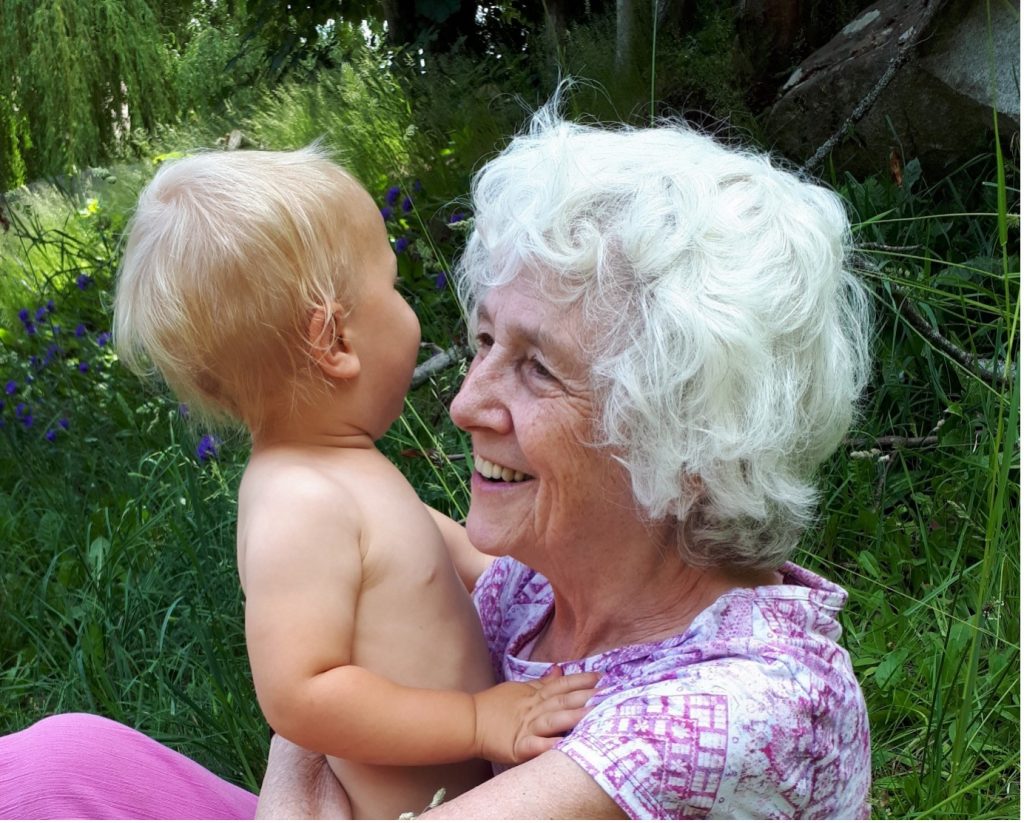
ALISON: I think they are still the only books devoted to this issue in such detail. And I published Healing the Unimaginable in 2012. There are a few good articles and the British put out some great compilations, but I think my books are still the only books that talk about what it is in the mind of the victim, how the abuse works, how the abusers set up the personality systems. I had the outline of the book in my head in 1994 and I didn’t write it. I was just a little nobody in western Canada. I thought someone important will write this book. But nobody did. Eventually I thought someone has got to write this. So I did. I gave up my gardening time and put it into a book. It took me a year. … I’m glad I wrote it and if someone wants to improve upon it, that would be great too! After I wrote that book, I felt there should be a similar book for survivors, so I wrote Becoming Yourself.
KATE: You also co-wrote a book with a client. Can you tell us a bit about that that was like? I was thinking about it from a relationship perspective – going from being a therapist to being colleagues writing a book?
ALISON: Well, I only had Wendy for one year in therapy. We worked intensely for a year, but we went on to write and edit manuscripts. We saw it as being colleagues. She’s a therapist too. It wasn’t problematic. From the Trenches was her idea. I wasn’t really looking to do a new book, but she had the idea and wanted some chapters from me, so I did it and it was fine. Wendy had already written two memoirs about her life of abuse, The Enslaved Queen and White Witch in a Black Robe. She has now written a third one, A Brain of my Own. I found it a bit shocking when she wanted to name me as her therapist because we don’t do that. People never say our names. I actually wrote a paper on it called ‘Reflections on having my name used’, which appeared in one compilation of articles.
I had to think about what it meant to me. I have written books on how to treat clients who have DID and are survivors of organized abuse, so how do others know if this works? But if clients are writing about their therapy with me, then people can judge my competence by what my clients say.
Also, I didn’t have to protect her identity and I didn’t have to protect mine… The organized abuser groups already knew me. They called me the white-haired witch of the West, among other names.
KATE: That leads me into a question. Sometimes therapists working with clients from organized abuse backgrounds fear being stalked or attacked. I am guessing you have had those same concerns at times. How was it to be so well-known by people who can be dangerous?
ALISON: In the early years it was frightening. I was a single parent and I still had kids at home. I was threatened. The cult leader would give Teresa a long spiel about how he was going to lie in wait in my office premises and kill me, all the details, knowing she would come and tell me. And, in fact, some of my clients were being attacked.
Basically, I looked at this and I felt that they would be completely stupid to kill me. I had given information about them to people and if I got killed those details would be given to the authorities. And I was angry at them for what they did to my clients, so they couldn’t drive me out of the field.
KATE: We have talked about your long membership with ISSTD. I understand you are now a retired member, which is a special category of ISSTD Membership. What keeps you still engaged with ISSTD and what benefits do you get from membership?
ALISON: I get to talk to people who understand what I’ve been dealing with. I live in this small community where I am a white-haired old lady who walks her dog. But I am also someone else. I have worked in this field, which none of my neighbours can possibly ever imagine or understand. I also want to keep contributing to the field while I can. I don’t supervise now I’m retired, but I can keep contributing. I want to keep up with it. I’ve put a lot of my life into this field. The OEA SIG is my community, people who understand more about my kind of life than my neighbours do.
KATE: I know that the OEA SIG is grateful for your knowledge, support and encouragement, for still ‘hanging around’. Speaking of ISSTD, this is the Focus on History series, so I’ll ask a history question. When I look through the historical leadership, it seems there was a less diverse leadership than we perhaps might see today. What was your experience, as a woman in ISSTD, in those early years?
ALISON: I felt like a fish out of water! I went to these conferences, they’d always be in these big, expensive locations and Eroca and I, we’d go together. We’d have to stay somewhere cheap, not in the conference hotel. We were both single mums. I wasn’t earning a lot of money. The women who were attending were often married to medicos, so perhaps could afford these places. Also, East Coast Americans, they all dress up. We’re not so much like that in Western Canada. We’re more relaxed. It felt very different… There was like this cocktail hour, whatever that is, where you mingled. I felt like a fish out of water. It felt like an old boy’s club with a few women there, but not really in leadership. And at the conferences it felt like moneyed people, unlike me. I was seeing my survivor clients for free or almost free.
But women did present papers and as soon as I started going, I too presented. And thankfully they did accept my presentations, even if they were about organized abuse.
KATE: A lot has changed, but diversity is still a challenge. As an international organization, how do we encourage diversity, not just about race, gender and professional groups, but how are we mindful of privilege and encourage participation from members who are from the less developed nations, and from lower paid professions. It is always on our mind.
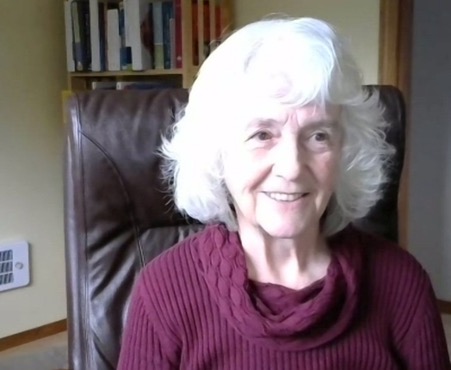
ALISON: Yes, ISSTD always felt rich and privileged … less so now.
KATE: Moving into future directions, where would you like the field to go in the future? What are the important things for us that we need to deal with or consider in the future as we continue to work with people who have experienced organized and extreme abuse?
ALISON: I think it’s really important that therapists understand that this is organized crime. It is psychologically sophisticated organized crime. There is a set up that as soon as the survivor begins to disclose, there will be parts inside that go and tell the group that they have made disclosures. Perpetrator groups will be prepared to shut people down and we have to learn how to handle that. We need to understand the clinical issues, as well as how these groups work… back in the 1930’s people had to learn how the mafia worked before they could deal with it. The same with this situation.
Somehow in the past, ISSTD has got bogged down with the ‘existence issue’. Is this true or not? Which memory is true or not true? That is not the real question or issue. The real issue is that we need to work out how to support these people. We have to learn how to help people who are still brave enough to come to therapy, even if they are still being hurt, because they think it is worth it. We need to learn how to work with people who are still being abused. And that is hard. We also need support for ourselves. This stuff changed my view of the world, you know.
KATE: Yes, it certainly does that! … I was thinking about what you said about needing to learn about these groups. One thing that seems helpful for our field is that we are beginning to learn more about organized abuse in general. There is research into the production of child sex abuse materials, into trafficking of children and young people across borders and between groups. We’ve had various enquiries into organizational abuse, including the Australian Royal Commission. Through this enquiry, for the first time the average Australian person realised that that big organized and semi organized groups can abuse children for many decades, cover it up, get away with it, pass children from perpetrator to perpetrator, and protect perpetrators. We saw that uncovered here and I am sure other countries have seen this too. I think that all these things have given validity to our field.
ALISON: Yes, very much so. And the fact that these groups actually put stuff on the internet and then get caught, you can see it is happening, and now, on some occasions, police have actually rescued children.
KATE: And those who think that children must have been making it up, that these atrocities could not happen, because humans could not do that to each other, must now face the fact that police officers are literally looking at online material and studying it as evidence. The police know these things did happen to children as they see photos and videos of it.
ALISON: I think the production of materials is an important issue. Pretty much all my clients have been involved with that. There was a studio in Toronto (3000 miles away) which three of my clients had been involved with, one of them as a photographer … and this was a long time before all these things came out in the media, in the public. It is a horrible thing, but it is good that it is being discovered and the world is becoming aware that it does exist.
KATE: Yes, this has big ramifications for our field. Alison, this brings me to the end of the questions I had. I note that we are ending with a sense of hope that our law enforcement is seeing evidence of organized abuse, and that may be a fitting place to finish. Thank you for speaking to me today. It has been a privilege.

